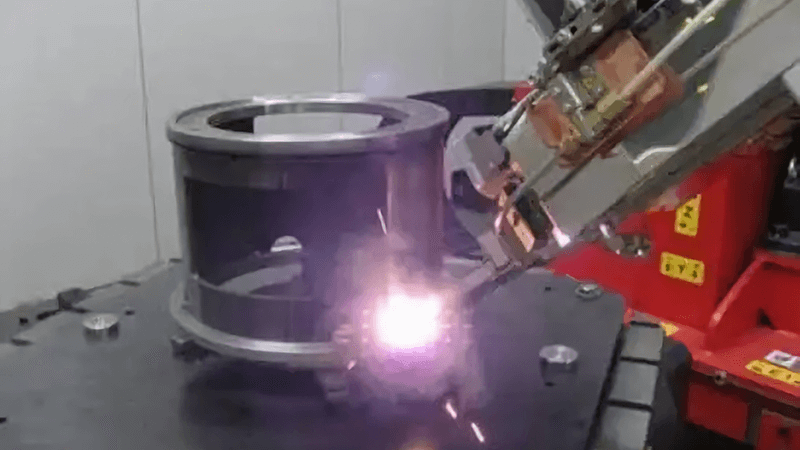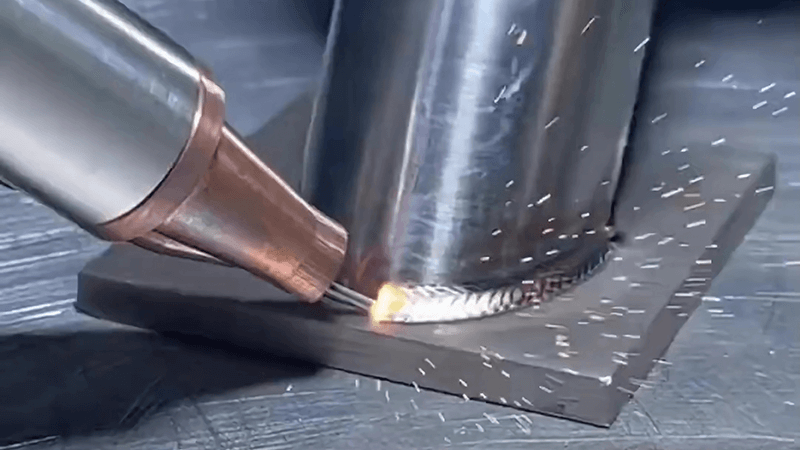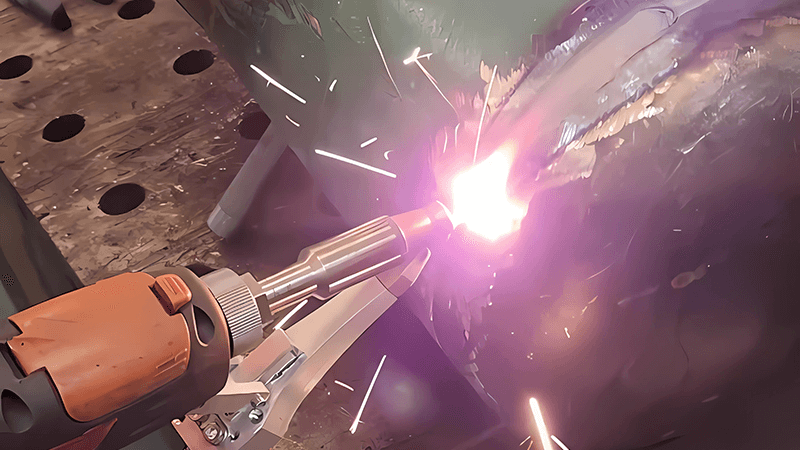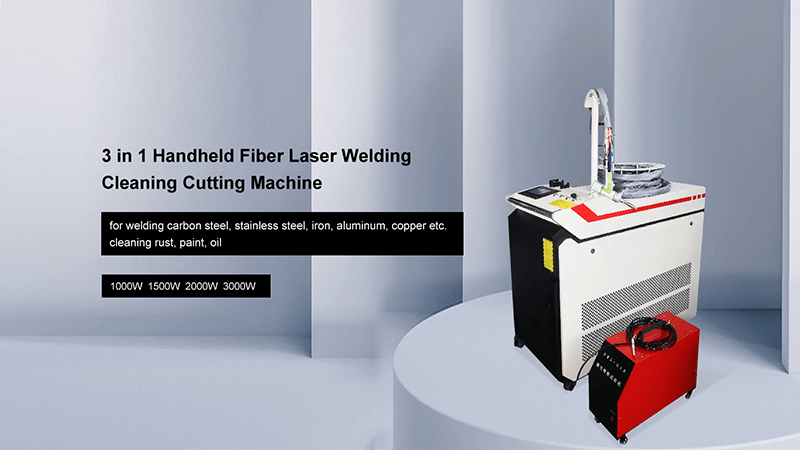Laser welding is changing how industries join metal. But what exactly is a laser welding machine, and why are more manufacturers turning to it instead of traditional welders?
A laser welding machine uses high‑powered focused beams to melt and fuse metal with razor‑fine control, delivering ultra‑clean, low‑distortion welds ideal for e‑mobility, aerospace, electronics and automated production environments.
Many customers come to Kirin Laser unsure whether laser welding is right for them. Some ask about materials, others worry about safety. In this article, I’ll answer the four most common questions we get—clearly and practically—from our perspective as a laser machinery OEM. Let’s dive in.

What is the use of laser welding?
When a client from the medical device industry came to us, they were stuck. Their traditional TIG system was slow and left burn marks on their precision components. They needed spotless, micro-level welds. We suggested one of our fiber laser welding machines. Within a week, their welds passed FDA inspection. Not only that—production speed jumped by 30%.
Laser welding is used for precision joining in industries where quality, speed, and cleanliness matter—like aerospace, automotive, medical devices, electronics, and battery manufacturing.
Applications of Laser Welding
Laser welding isn’t just for high-tech sectors. It’s now widely used across various industries due to its speed, precision, and low thermal impact. Here's a breakdown:
| Industry | Typical Use Case | Benefits of Laser Welding1 |
|---|---|---|
| Automotive | Battery tabs, gear components | High-speed, robot-compatible, clean joints |
| Medical Devices | Micro-welding stainless or titanium parts | Spotless seams, FDA-grade finish |
| Aerospace | Thin-wall structures, titanium parts | Low distortion, strong but lightweight welds |
| Electronics | Enclosures, sensor cases | Micro precision, no damage to components |
| Jewelry | Gold, silver joints | Accurate and visually clean welds |
Why Customers Choose Laser Welding
- Minimal Heat Affected Zone (HAZ)2: Reduces warping and post-processing.
- Non-contact: No electrode wear, fewer consumables.
- Automation Ready: Seamless integration into smart factories and robotic arms.

What materials can be laser welded?
I get this question a lot. Customers wonder if their specific alloy is “laser-weldable.” The answer usually depends on three things: reflectivity, thermal conductivity, and thickness. But the truth is, laser welding works on a much wider range of materials than many expect.
Most metals—including stainless steel, carbon steel, aluminum, titanium, copper, and even dissimilar metals—can be laser welded with the right settings and system design.
Material Compatibility Breakdown
Laser welding3 can join metals traditionally considered difficult or impossible to weld using conventional methods. Here's a more structured look:
| Material | Weldability | Notes |
|---|---|---|
| Stainless Steel | Excellent | Clean, high-strength welds with minimal heat distortion |
| Carbon Steel | Excellent | Requires proper shielding gas for oxidation prevention |
| Aluminum | Good | Needs pulsed lasers and gas control due to reflectivity |
| Titanium | Excellent | Ideal for aerospace and medical uses |
| Copper | Moderate | High reflectivity needs high power or green lasers |
| Brass/Bronze | Moderate | Similar to copper; needs precise control |
| Dissimilar Metals | Variable | Feasible with filler and tuning settings |
Tips for Material Selection
- For highly reflective metals (like copper), we recommend either higher power fiber lasers or green lasers4 depending on your budget and end use.
- For joining aluminum, we suggest using pulsed wave mode or beam wobble to overcome reflectivity and reduce porosity.

Does laser welding need gas?
I often get asked if laser welding works “dry.” The answer is no. While it’s a non-contact process, gas plays a critical role—just not the way people expect.
Yes, laser welding requires shielding gas—typically argon or nitrogen—to protect the weld pool from oxidation, reduce spatter, and stabilize the arc.
Understanding the Role of Gas
Shielding gases5 don’t just “cover” the weld. They influence penetration depth, speed, and overall appearance. Choosing the wrong gas—or skipping it—can result in oxidation, porosity, or even failure.
| Gas Type | Common Uses | Pros | Cautions |
|---|---|---|---|
| Argon | Most universal metals | Inert, clean welds | More expensive than nitrogen |
| Nitrogen | Stainless steel, low-alloy steel | Cost-effective, improves weld | May cause nitrides on some metals |
| Helium | Deep penetration (rarely used alone) | High-quality finish | High cost |
Kirin Laser’s Standard Recommendation
We ship most machines with an argon nozzle system, but we allow customization. Some clients want gas mixing valves6, others add pressure control. We’ve also helped companies automate their gas supply with real-time monitoring to keep their welds consistent even during high-volume runs.

How safe are laser welders?
Safety is the most overlooked question—and the most important one. I’ve seen customers try to cut corners on this. But at Kirin Laser, we never compromise on laser safety. Ever.
Laser welding machines are safe when operated correctly with proper shielding, training, and safety interlocks. Class IV lasers must always follow strict safety standards.
Built-in Safety Systems
Modern laser welders, especially OEM models like ours, come packed with safety features:
- Laser Enclosure & Interlocks: Prevent beam leakage when doors open
- Emergency Stop7: Instant power shutoff in case of danger
- Foot Pedals or Triggers: Avoid accidental laser firing
- Laser Safety Glasses8: Matched to laser wavelength, always required
| Safety Feature | Description | Our Standard Practice |
|---|---|---|
| Enclosure | Fully seals work area with observation windows | Offered on all Class IV units |
| Door Interlock | Machine stops if door opens | Mandatory on CE/FDA models |
| Remote Alarm Signal | Alerts operators of active laser | Optional add-on |
| Protective Eyewear | Matches laser wavelength, mandatory use | Included with every unit |
Our Training Promise
At Kirin Laser, we provide remote and onsite training. This includes safety procedures, signage, proper eyewear use, and how to set up shielding if you use an open platform. We also help clients develop SOPs to pass CE and FDA compliance audits.

Conclusion
Laser welding9 isn’t just “another welding method.” It’s a fast, clean, precision tool that’s reshaping manufacturing across the globe. From medical devices to EV batteries, laser welders offer unmatched benefits—if used right. At Kirin Laser, we don’t just sell machines—we help you transform your production with powerful, reliable, and safe laser solutions built for the real world.
-
Explore this link to understand how Laser Welding enhances efficiency and quality across multiple sectors. ↩
-
Learn about the significance of HAZ in welding to improve your understanding of its benefits in manufacturing. ↩
-
Explore the benefits of laser welding, including its ability to join difficult metals and achieve high-quality welds. ↩
-
Discover how higher power fiber lasers and green lasers enhance welding of reflective metals, ensuring better efficiency and quality in your projects. ↩
-
Understanding shielding gases is crucial for achieving optimal weld quality and preventing defects. ↩
-
Exploring gas mixing valves can enhance your welding process by optimizing gas combinations for better results. ↩
-
Learn about the critical role of Emergency Stop features in enhancing safety during laser welding operations. ↩
-
Explore this link to understand the importance of proper eyewear in laser operations and ensure maximum safety. ↩
-
Find the best laser welding machine and laser welding solutions from Kirin Laser, clicking this link to get all your needs. ↩





